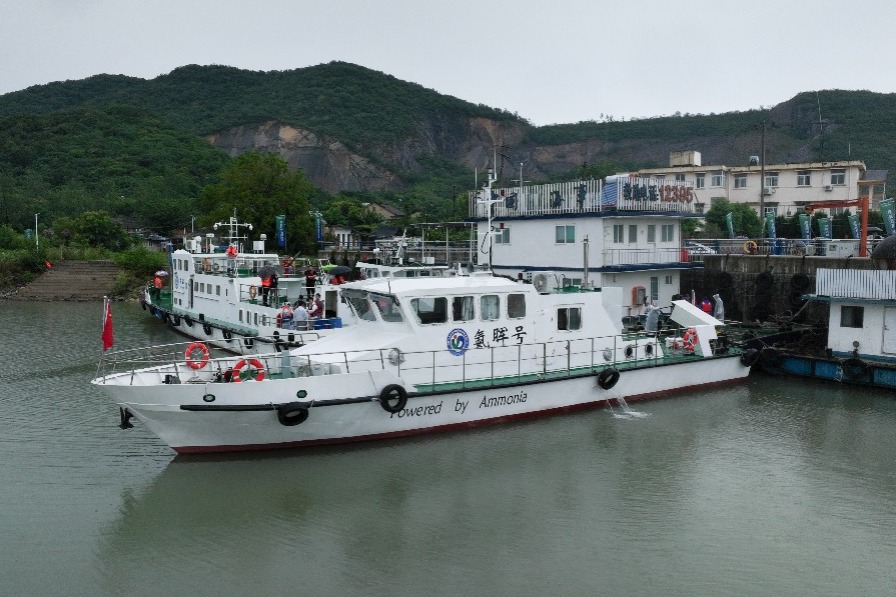US can never dominate Asia-Pacific


US Vice-President Kamala Harris visited Singapore and Vietnam from Aug 22 to 26.
Earlier, US Secretary of State Antony Blinken held talks, via video link, with leaders of ASEAN member states, and Secretary of Defense Lloyd Austin visited some Southeast Asian countries. These visits and meetings are part of the US' intensive diplomatic push to expand its influence in the region.
Harris' visit to the region was a continuation of the strategies of the Barack Obama and Donald Trump administrations, and aimed at promoting the Joe Biden administration's Indo-Pacific strategy.
Washington has been desperately trying to consolidate its hold on the region for more than 10 years and Harris' visit, despite the chaos caused by the US' withdrawal from Afghanistan, shows the Biden administration's focus is back on the Indo-Pacific region.
Yet Harris' visit may not yield the desired results. Although Harris visited the region to look for potential partners for the Quad (a loose strategic partnership among the US, India, Japan and Australia) in Southeast Asia, she did not get any assurance from either Singapore or Vietnam, so she tried to smear China, saying that by claiming the majority of the South China Sea as its maritime territory, China is violating the rules-based order.
On the economic front, the US needs to consider whether it will join the Comprehensive and Progressive Agreement for Trans-Pacific Partnership, the free trade arrangement created by 11 countries after Trump pulled the US out of the original Trans-Pacific Partnership floated by Obama.
The US is promoting a digital ecosystem in Indo-Pacific region, and trying to convince the member states of the Association of Southeast Asian Nations to join the "Blue Dot Network" as an answer to China's Belt and Road Initiative. But Singapore and Vietnam remained noncommittal despite Harris' exhortations.
The US is using the Indo-Pacific strategy to strengthen its alliance network, in order to check China's rise. But since it cannot dominate the region without the support of allies, it is trying to restore its military ties with Thailand and the Philippines and promoting a "new rules-based order" to expand its alliance.
Biden is focusing on Southeast Asia also to divert US public attention from a series of domestic and foreign issues. The talks Blinken and Austin have held with the leaders of Southeast Asian countries over the past two months, and Harris' visit reflect the great importance the US attaches to the Indo-Pacific region. The US' renewed focus on the region and its efforts to strengthen its alliance network will be reflected in two ways.
First, the US will likely announce its commitment to, and achievements in, Southeast Asia at the Asia-Pacific Economic Cooperation meetings scheduled for November. And second, Biden or Harris may attend the video conferences likely to be held during the East Asia Summit in November, because Trump's absence from the meetings concerning the region for three consecutive years has not gone down well with ASEAN leaders and Biden wants to woo them back to the US' fold, in order to push forward his Indo-Pacific strategy.
However, even if ASEAN members accept the US' offer, they may not want to be part of any anti-China alliance network. ASEAN members, including Singapore and Vietnam, are reluctant to choose sides and instead want to maintain friendly relations with both China and the US.
In fact, Singapore Prime Minister Lee Hsien Loong has been reiterating that it is impossible for Singapore to choose sides between Washington and Beijing. And while the US has a lot of work to do to restore its military ties with Thailand and the Philippines, Indonesia and Malaysia seem more inclined to exercise greater strategic autonomy rather than becoming US pawns, and Cambodia, Laos and Myanmar are working with China to build a community with a shared future in the region.
Besides, ASEAN's goal is to maintain peace and promote common development in the region. Hence, even if some ASEAN members may welcome the US' increasing presence as a security guarantee, they would still prefer to leave economic policy to ASEAN decision-makers.
Also, ASEAN wants to maintain its centrality in regional cooperation, by limiting the US' involvement in the region. And since the US' attempt to isolate China from Southeast Asia can harm ASEAN members' interests, the US' plan could face opposition from ASEAN.
As both China and the US are strategic partners of ASEAN and have acknowledged the importance of the ASEAN Outlook on the Indo-Pacific-which aims to strengthen ASEAN's position and engagement in the Asia-Pacific and Indian Ocean regions, and connect ASEAN with other regional blocs-the EAS is a good platform for them to communicate with each other.
Furthermore, since the US-led Indo-Pacific alliance network could pose a threat to ASEAN's centrality in the region, as was proved by the Obama administration's efforts to dominate the Asia-Pacific, the regional economic bloc may not side with Washington.
And given that the US only pays lip service to ASEAN, for it offers to help the regional bloc to tap into the huge demand for infrastructure, Southeast Asian countries favor China's win-win solution. As such, the US faces an uphill task in trying to consolidate its foothold and expand its influence in the region to check China's rise.
The author is a professor at the School of International at Peking University.
The views do not necessarily reflect those of China Daily.
If you have a specific expertise, or would like to share your thought about our stories, then send us your writings at opinion@chinadaily.com.cn, and comment@chinadaily.com.cn.
































